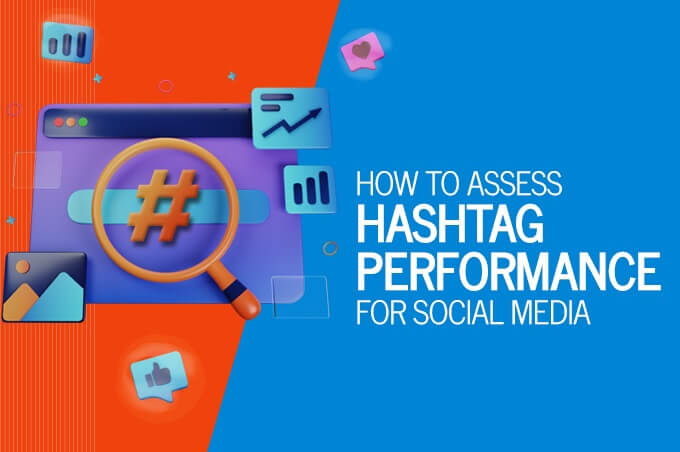How to Assess Hashtag Performance for Social Media
 August 4, 2025 | By Ilfusion Team
August 4, 2025 | By Ilfusion Team
In social media, hashtags are a way for audiences to discover your content. But simply adding popular or trending tags won’t guarantee success. To get meaningful results, you need to understand how well your hashtags are performing.
In this guide, we’ll explore how to assess hashtag performance and use insights to boost visibility, engagement, and relevance.
Why Hashtag Performance Matters
Hashtags are more than just social media accessories. They serve as digital entry points for new audiences too. Here’s why tracking performance matters:
- Boost Discoverability: Hashtags help you appear in searches and topic feeds, expanding your content’s visibility.
- Target the Right Audience: The right hashtags connect you with niché communities and interested users.
- Refine Your Strategy: Performance data tells you what resonates, helping you optimize future content.
- Maximize ROI: Tracking performance ensures your efforts are bringing value and not wasted on ineffective tags.
Key Metrics to Track in Hashtag Performance
Before you can optimize hashtag performance, it’s important to understand which metrics matter.
Impressions and Reach
Tracking both impressions and reach tells you how far your posts are spreading and how visible your hashtags are. To track this, simply use the built-in platform analytics tool, such as Instagram Insights and Meta Business Suite:
- Impressions count how many times your content with a hashtag was displayed.
- Reach measures how many unique users saw that content.
How to Assess:
- Look specifically at posts where you used targeted hashtags—are they consistently earning high visibility?
- If a hashtag generates more impressions but low engagement, it might be too broad or untargeted.
- Conversely, a hashtag with moderate reach but high engagement could be more effective at connecting with your niche audience.
Engagement Rate
Look at how users interact with posts that include specific hashtags. Common engagement actions include:
- Likes
- Comments
- Shares
- Saves (on platforms like Instagram)
How to Assess:
- To calculate the engagement rate, divide total engagements by total impressions or reach. A higher rate suggests the hashtag is connecting with the right audience.
Other Metrics to Look Into
Follower Growth from Hashtag Campaigns
Monitor if using certain hashtags correlates with a boost in followers. While it’s an indirect metric, steady growth following a hashtag campaign often signals effective targeting and brand interest.
Click-Throughs and Link Taps
Some hashtags are meant to drive traffic to websites, landing pages, or product listings. Use analytics tools to track how often users who found your content via hashtags take the next step, like clicking a bio link or visiting your site.
How to Assess Hashtag Performance
Once you’ve gathered data, the next step is identifying what works. Evaluate high- and low-performing hashtags using the following guides:
- Compare Post Performance: Which hashtags consistently show high engagement or reach?
- Check Frequency: Are high-performing hashtags used regularly or sporadically?
- Analyze Relevance: Is the content aligned with the meaning or theme of the hashtag?
- Test Variations: Try different combinations to see what gains traction. Try broad hashtags (#fitness) and more specific ones (#HIITworkouttips).
Tips for Optimizing Hashtag Use
It’s important to note that improving your hashtag game is about quality over quantity. Here are some practical ways to make your hashtags work harder for your brand:
1. Mix Up Different Types of Hashtags
Using a variety of hashtag types such as trending, branded, and community-specific tags. Doing so allows you to expand your reach while still targeting relevant audiences:
- Trending hashtags help you join popular conversations
- Branded hashtags reinforce brand identity and campaign consistency
- Community-specific hashtags connect you to niché audiences with shared interests
2. Ensure Hashtag Relevancy
Misusing or overreaching with irrelevant hashtags can hurt your credibility and confuse your audience. Always choose hashtags that accurately reflect your post’s topic, as well as your brand identity. This is highly important, especially if you want to hop into a trend.
For example, if your content is about small business marketing tips, hashtags like #SmallBusinessTips or #MarketingStrategy are more appropriate than generic or unrelated tags. Relevance improves engagement and search visibility.
3. Avoid Hashtag Overstuffing
Similar to keyword usage, overstuffing is also possible with hashtags. Using too many hashtags can appear spammy and dilute the focus of your content.
Most platforms reward thoughtful hashtag use over sheer quantity. On Instagram, 5 to 10 well-chosen hashtags typically yield better results than maxing out the 30-tag limit.
Focus on quality and variety to maintain readability and professionalism while maximizing discoverability.
4. Study the Competition
Observing what successful competitors or industry leaders are doing can give you insight into high-performing hashtags. Analyze which tags they use consistently and which ones generate the most engagement.
While you shouldn’t copy their strategy outright, adapting proven tags and combining them with your own can help you stay competitive and relevant.
Boost Your Social Media Marketing Performance
It’s essential to remember that hashtag performance isn’t static. Stay relevant by keeping up with current events, pop culture, industry updates, and algorithm shifts that could affect hashtag effectiveness.
At Ilfusion, we believe that data-driven strategy is the key to meaningful social media results. Our team specializes in optimizing every aspect of your content—from hashtag research and performance analysis to creative development and cross-platform execution.
Ready to take your social media to the next level? Contact Ilfusion today at 888-420-5115, or send us an email at cr******@******on.com to get started!
Filed in: Articles, Marketing, Social Media

